National Depression Glass Association
Preserving America's Glass Manufacturing Heritage
The Evolution of a Glass Show
Did you ever wonder what it was like to set up at a Glass Show? What did the room look like before and during the setup, before the show started? How much work is actually involved in presenting all of that beautiful glass for sale?
In the beginning ...
Well, now you get to see behind the scenes. Here are some photographs taken at the Washburn Glass Show in San Antonio, Texas, in February 2004. We start off with the building before any of the dealers have been allowed in for setup. The promoter first has to set up the booths with standard 8 foot tables. Looks a bit sparse, doesn't it?
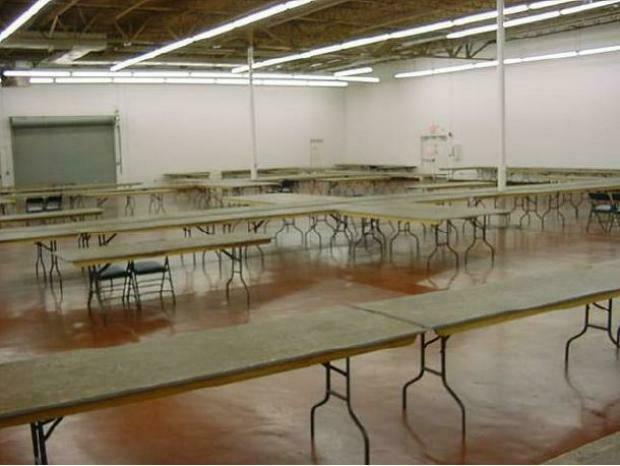
Here, a lone dealer has arrived and is beginning to set up a booth.
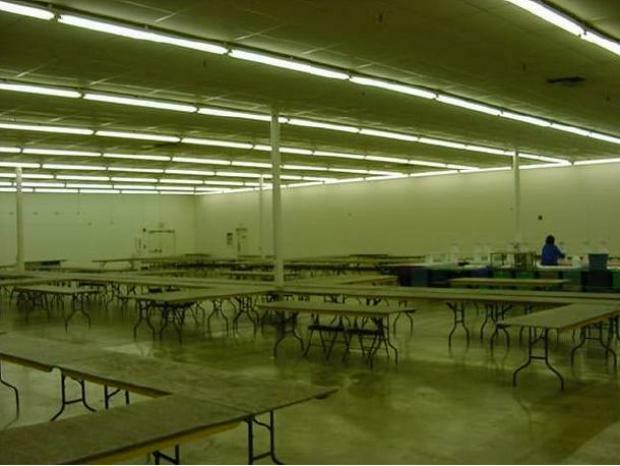
A few more dealers have come in now and there are still quite a few to come. The dealers have to take turns bringing their merchandise into the show, as there are only a few entry doors, and not everyone can come in at the same time.
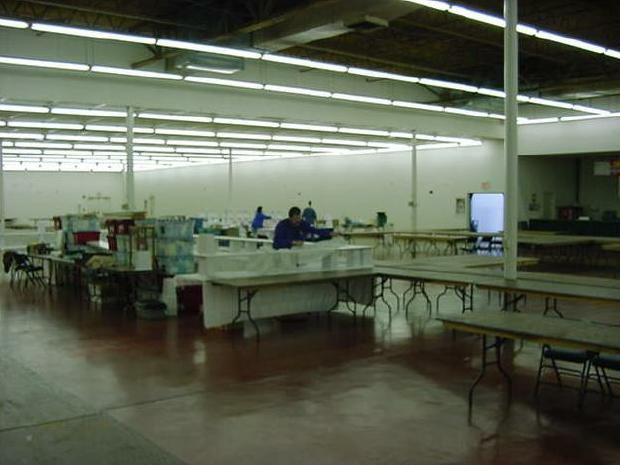
Setup under way ...
Now the shelves and tablecloths and even the lights are falling into place. Each dealer has his/her own technique for setting up (and even for unpacking and packing the glass). So you see various types of shelves and lighting being used.
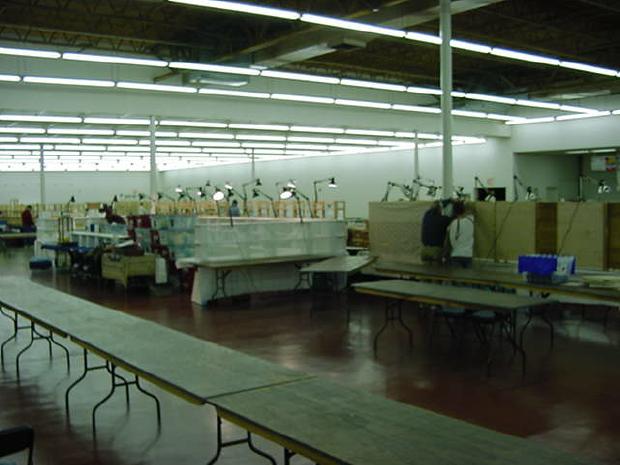
Each table has to be covered to make an attractive display (and the Show Chairman requires it). Some folks have fitted table covers which neatly drape all around an 8 foot standard table. Others use "skirts" which hide the underside of the table, and then a smaller tablecloth on the top. Some dealers will put merchandise on the floor, under the tables.
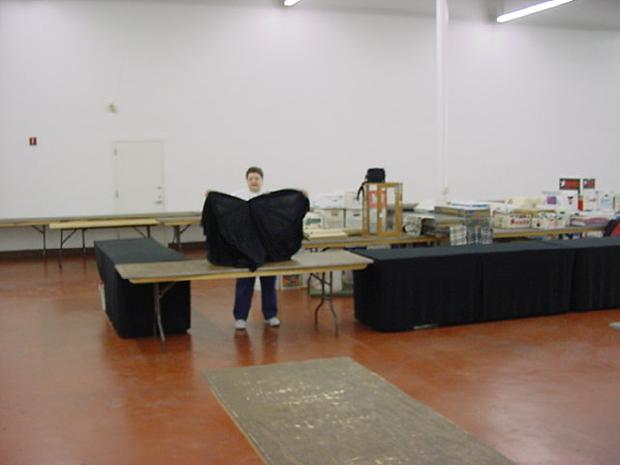
Glass is transported in various containers. Many dealers like the plastic storage boxes you can buy at hardware stores, while other choices include "chicken boxes" (actually used at one time to ship frozen chickens), banana boxes or apple boxes. The advantage to apple or banana boxes is that you can get them free from your local grocery store.
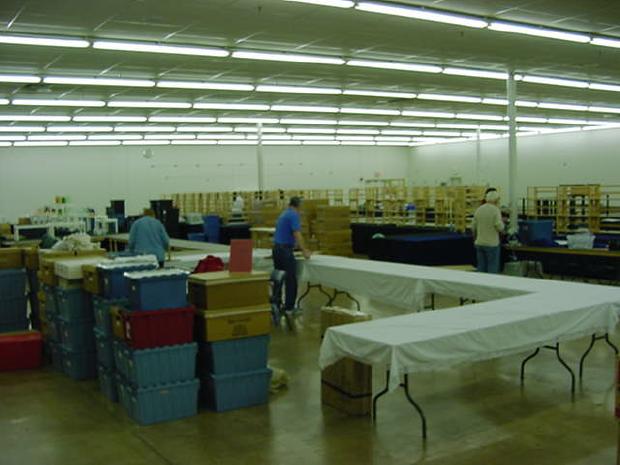
As you can see, not only are the containers used to transport the glass of all different types, but the shelves used to display the glass are sometimes wood, sometimes plastic, sometimes glass and generally whatever the individual dealer determines works best for him or her. Each dealer also determines the type of lighting (if any) they will used in their booth.
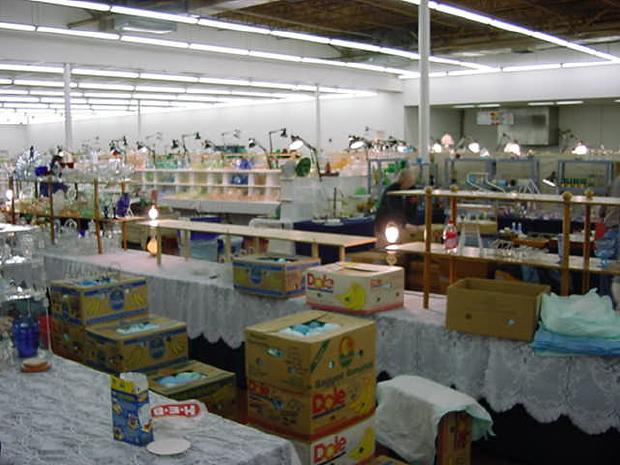
Quite often, the glass or pottery is wrapped in what looks like disposable diapers. In fact, these pads are the same material as disposable diapers, but they usually are "seconds" of hospital pads, sold by a show supplies salesman who comes to some of the shows on setup day. But other dealers use paper, paper bags, cloths or "drop boxes" (boxes with cardboard dividers, where the pieces of glass are simply "dropped" (carefully) into the compartments without even being wrapped).
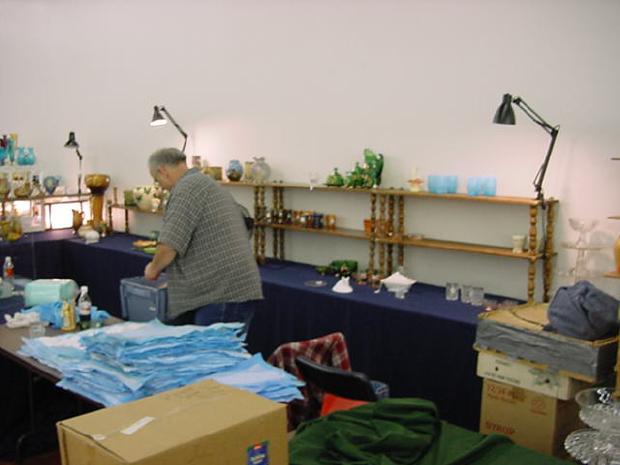
Finishing up ...
Eventually, all of the dealers manage to get their booths set up and the extra boxes (and empties) are removed from the showroom floor. Weary dealers then leave the showroom floor on Friday evening, ready for dinner and a good night's sleep.
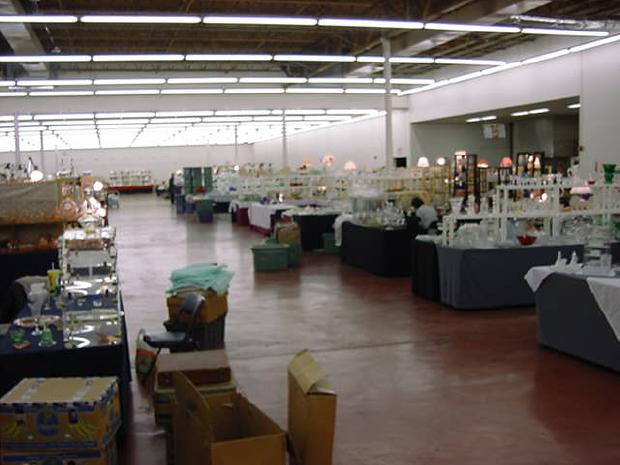
The finished product ...
Saturday morning, and the magic transformation is complete. Here are several views of the show floor at the Washburn San Antonio show in February 2004. The place looks spectacular with all the lights on and the glass sparkling on the shelves. Makes you want to go and buy, doesn't it?
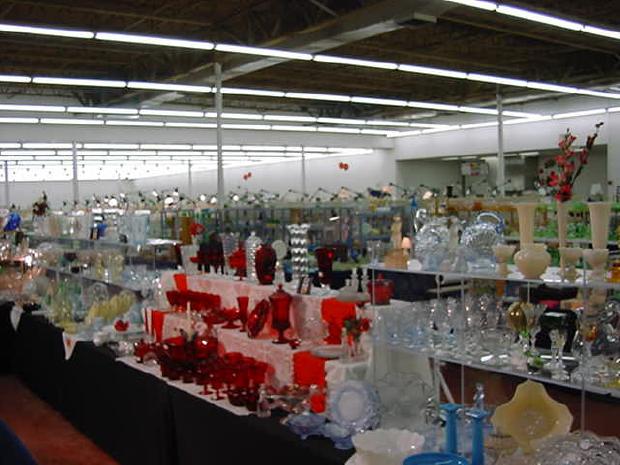
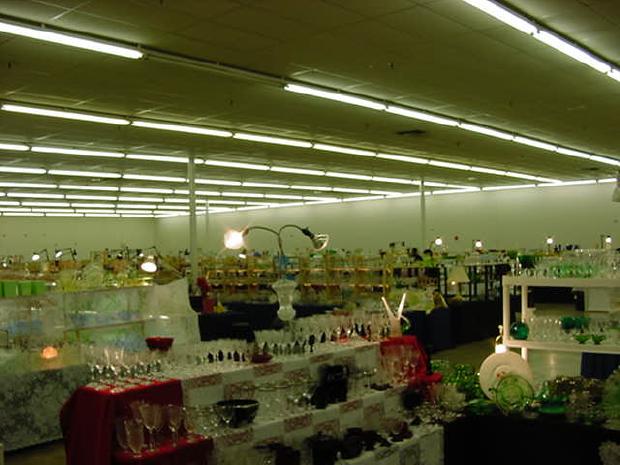
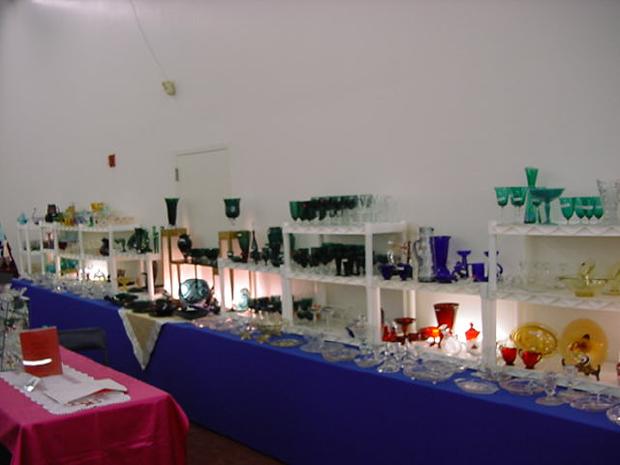
Displays of private collections
Some shows, like the NDGA Convention, feature displays of private collections for the public to view and enjoy. The Washburn San Antonio Show in February 2004 featured private displays in a separate room where several seminars were also presented. This show is a lot like the NDGA Convention, and is held in the same building where the NDGA held the Annual Convention in 1998. Here are some photographs of the displays in February.
Hocking's Pink Miss America
This pattern was originally introduced by Hocking Glass Company around 1935 and production continued through 1938. It is mostly found in pink, green and crystal, with a few of the pieces found in red (Royal Ruby). The red pieces are quite scarce and command high prices.
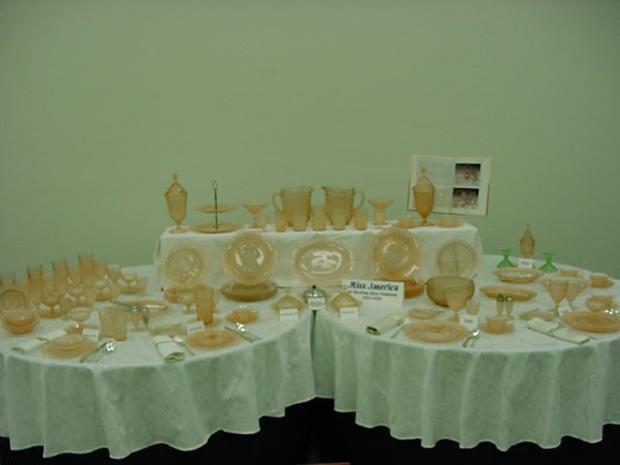
Morgantown Etching Plates
These are actual etching plates from the Morgantown Glass Company. These plates were used to produce the acid etchings found on many "elegant" glass patterns from the Depression Era. All of the companies that produced acid-etched patterns used plates similar to these. Examples of acid-etched patterns include Cambridge's "Rose Point" or "Portia" and Fostoria's "Navarre" or "Versailles"
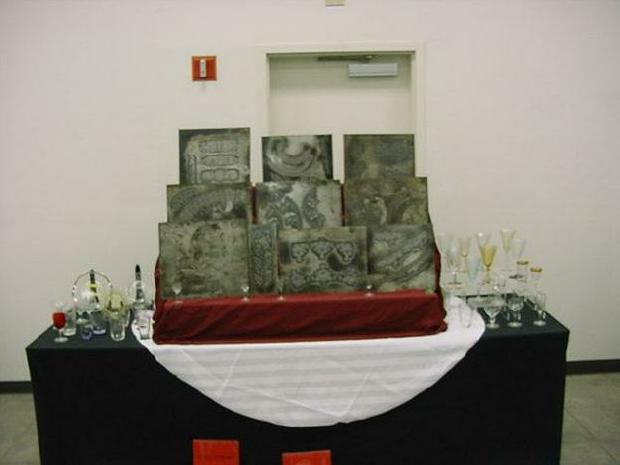
The Morgantown plates shown below in close-up have been carefully cleaned and restored by Bert Kennedy. Bert Kennedy and Larry Baker then cataloged all of the etching plates and produced a book and a CD-ROM showing all of the restored plates. Both the book and CD were offered for sale at the show, and these gentlemen made a repeat performance of their display and seminar at the 2004 NDGA Convention in Council Bluffs, Iowa.
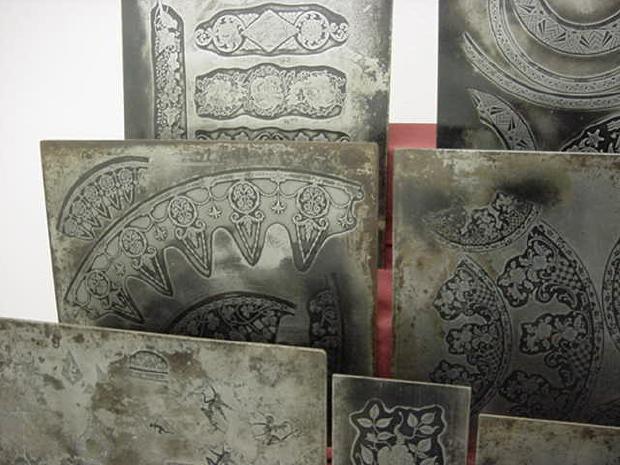
Fostoria Heirloom
This pattern was actually made after the Depression Era. It was introduced by Fostoria in 1959 and was produced through 1970. Because of the way that the glass was manufactured, each piece is slightly different from every other similar item. The pattern was produced in a wide range of colors, and the collection really sparkles.
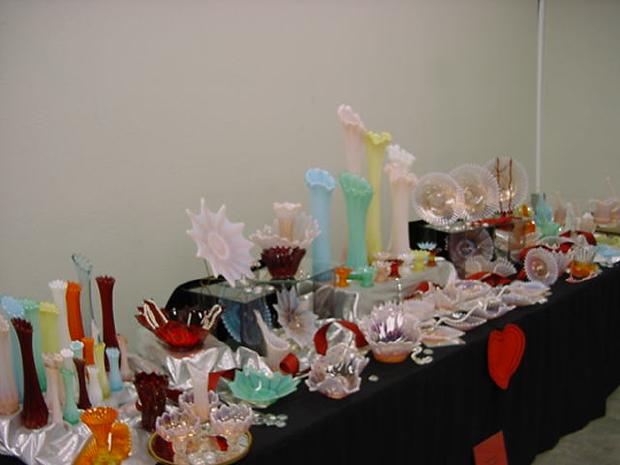
Hazel-Atlas Moderntone
Moderntone was a pattern that crossed the boundaries of the Depression Era and carried on into the 1950's. It was made in many different colors and treatments. The white color was more of a 50's color, while the Depression Era pieces were mostly cobalt blue and amethyst. You will see a few red pieces on the table for contrast - these are probably "Royal Ruby" pieces by Anchor-Hocking.
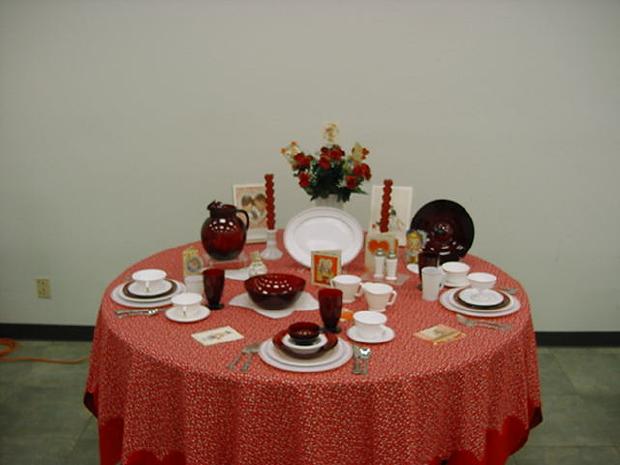
New Martinsville Radiance
The Radiance pattern was made by New Martinsville Glass Company from 1936 to 1939. It was made in a variety of colors, and this display is primarily showing the beautiful red color produced by New Martinsville (which later changed its name to Viking Glass Company). Radiance was also used as the "blank" for a number of etchings that were sold by this company.
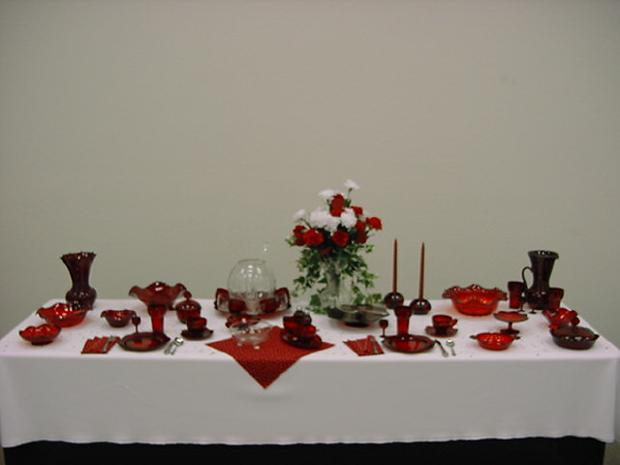
The Rare Glass Case
One display case was set up at the front of the show to hold "rare" glass items. Each of the dealers was invited to exhibit a rare item from their booth. In some cases the items were offered for sale, while other items were simply brought from personal collections to be included in the display.
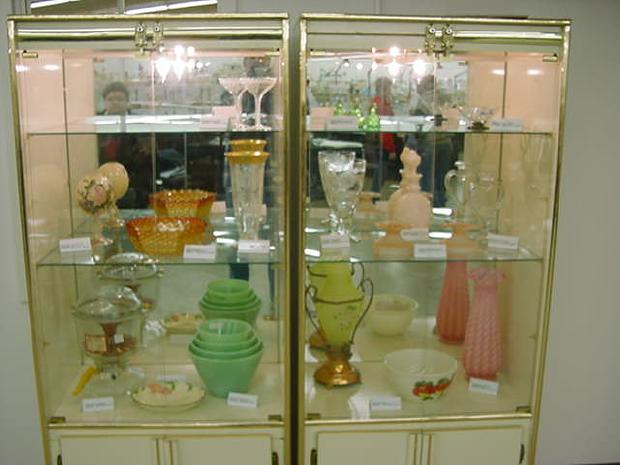
Cambridge Swans
The largest display at the Washburn San Antonio show in February 2004 was the collection of Cambridge Swans, brought to the show by Jim and Nancy Finley, all the way from Missouri. In addition to exhibiting this wonderful array of swans, they also gave a seminar on both Saturday and Sunday, so that all attendees could learn more about these beautiful works of the glassmaking art.
The first photograph is of the milk glass Swan punch set. There were very few of these ever made - I believe the last count was eight!! This is a rare set for sure.
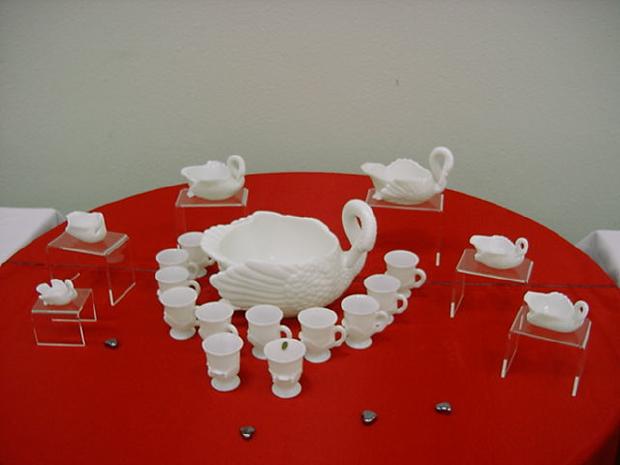
The following photographs show the remaining Cambridge Swans that filled four eight-foot tables and the round center table. There were all the colors and treatments in the display, and the Finleys took the time to educate the attendees regarding the various types of Swan and the relative rarity of the sizes and colors. Note the crystal Swan punch bowl in the first picture. It is not nearly as rare as the white one, but it is still a spectacular piece of glass and a fine example of the art of glassmaking.
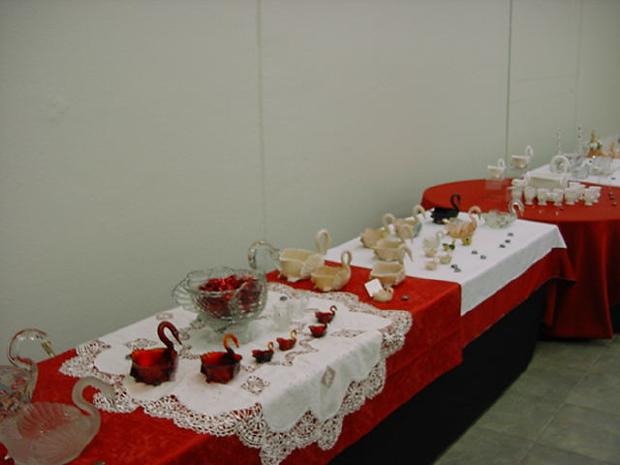
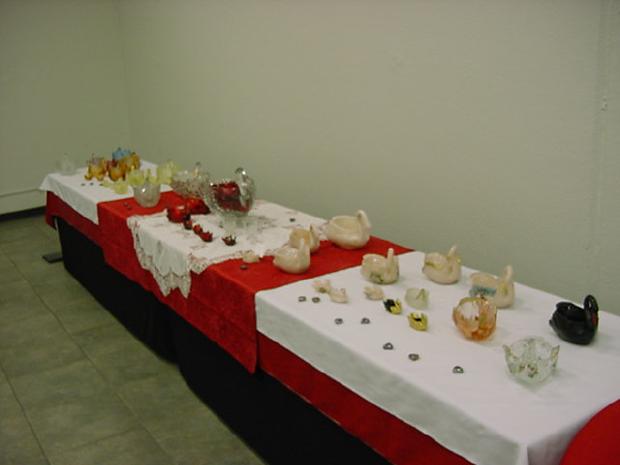
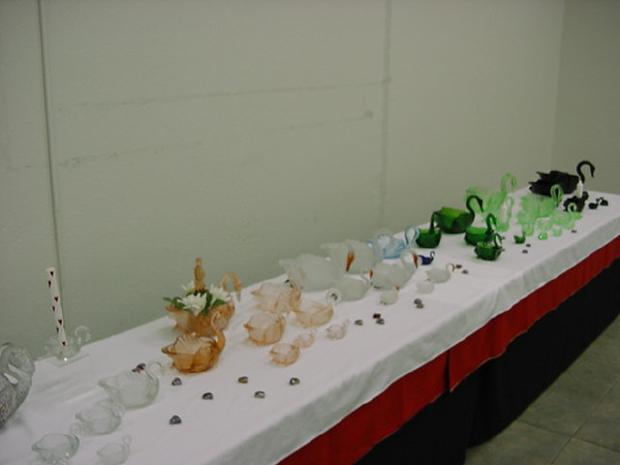
The NDGA National Glass Collection
Finally, the National Depression Glass Association was well represented at the show. The NDGA traveling display was on exhibit, and there was a table showing the latest donations to the NDGA which were presented at Washburn's San Antonio Show. The first photograph is of the traveling display.
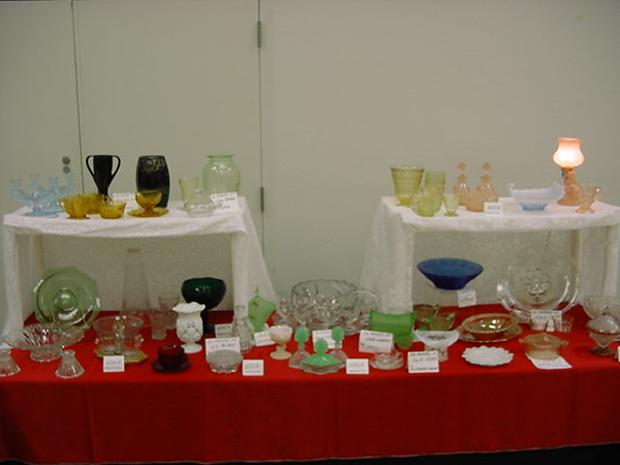
The second photograph is of the table of glass that was donated to the NDGA National Glass Collection during the Washburn San Antonio Show in February 2004. The collection is growing, and the NDGA would like to thank everyone who has contributed.
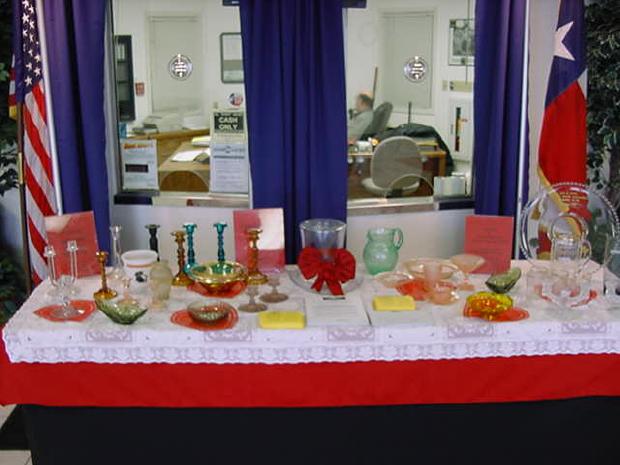
Come and see us at the NDGA Convention
Now that you have seen the amount of work that goes into putting on a large Glass Show or Convention, we'd sure like to see you come to one of our Annual Conventions. We promise that you'll find some spectacular pieces on exhibit from private collections, and you will most likely find something in the Glass Show that just has to go home with you. You'll learn from the seminars and displays and from just chatting with dealers and fellow collectors. Y'all come, now. If you can't make it to the NDGA Convention this year, check back with us, as the Convention is held in a different city every year. Meanwhile, plan to attend a Glass Show near you.